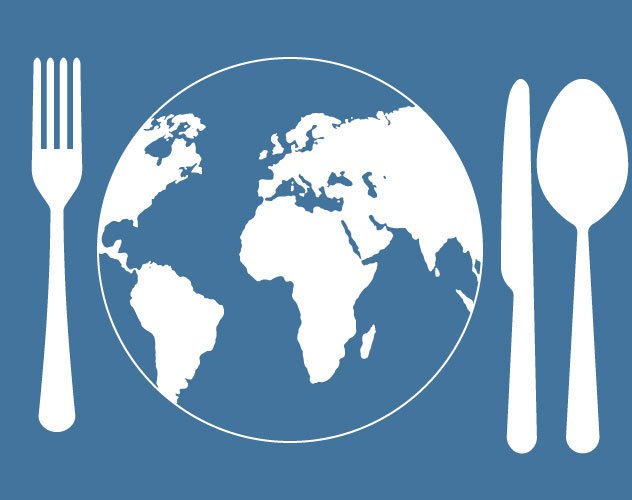Introduction to Culinary Diplomacy
Culinary diplomacy, also known as gastrodiplomacy, is the practice of utilizing food as a means to bridge cultural divides and foster international relations. It is a strategic form of public diplomacy where the universal affinity for food helps to transcend borders, language barriers, and political differences, enabling meaningful global connections. By sharing culinary traditions and practices, nations can convey their cultural heritage and values in a unique, interactive, and often delicious manner.
The importance of culinary diplomacy lies in its ability to create a foundation of mutual respect and understanding. Unlike traditional diplomacy, which often relies on formal negotiations and policy discussions, culinary diplomacy engages people on a personal level. It taps into shared human experiences, fostering goodwill and familiarity among diverse populations. This form of soft power can break down preconceived notions and stereotypes, paving the way for more open and fruitful dialogues between countries.
One of the key strengths of culinary diplomacy is its accessibility. Food is a common denominator that brings people together, regardless of their background or nationality. A shared meal can serve as a neutral ground where individuals can come together, learn from each other, and celebrate their differences. The act of preparing and sharing food can also highlight the intricacies of a culture’s history, geography, and social practices, offering a unique educational experience that is both engaging and memorable.
By embracing culinary diplomacy, countries can showcase their culinary heritage and foster an appreciation for their culture on the global stage. This approach not only enhances cultural exchange but also promotes tourism, trade, and international cooperation. As globalization continues to increase connectivity between nations, the role of food in diplomacy is becoming increasingly significant, demonstrating that the simple act of sharing a meal can indeed bring the world closer together.
Cultural Exchange Through Food
Cultural exchange through food represents a unique facet of diplomacy and international relations, fostering a space where individuals can connect on a deeper level by sharing and experiencing traditional dishes. When people engage in the culinary practices of different cultures, they gain a first-hand insight into the historical context, customs, and values that shape those communities. This form of cultural exchange transcends linguistic barriers, offering a universal understanding and appreciation that words alone cannot convey.
For instance, traditional Japanese tea ceremonies not only introduce participants to the nuanced flavors of matcha but also incorporate the meticulous rituals that reflect centuries of Japanese history and Zen philosophy. Similarly, the communal nature of Ethiopian injera dining encourages shared experiences and fosters a sense of unity, representing an essential cultural value.
There have been numerous instances where food has played a pivotal role in promoting cultural understanding and respect. The annual “Taste of Chicago” festival brings together a myriad of international cuisines, allowing visitors from diverse backgrounds to interact, learn, and appreciate each other’s culinary traditions. This event not only highlights the rich cultural diversity within the city but also serves as a bridge between different ethnic communities.
Additionally, state banquets where world leaders dine together on menus that celebrate both host and guest nations’ traditional foods epitomize how culinary diplomacy can facilitate dialogue and strengthen international partnerships. Such events underscore food’s potential to serve as a common ground, creating an atmosphere of goodwill and collaboration.
The global phenomenon of food festivals, cooking classes, and culinary tours further exemplifies how sharing traditional foods can dismantle cultural barriers. By tasting, cooking, and discussing different cuisines, individuals immerse themselves in other cultures, fostering a greater sense of empathy and understanding. Thus, food not only nourishes the body but also bridges cultural gaps, building a foundation for enduring international relationships.
Promoting Tolerance and Inclusivity
Culinary diplomacy has the unique capability to celebrate diversity by highlighting the richness of diverse cuisines from around the world. By fostering a shared appreciation for different culinary traditions, it can break down barriers, promote tolerance, and foster inclusivity. When people come together to partake in the flavors and traditions of different cultures, they engage not just in a shared meal, but in an exchange of stories, histories, and values that transcend geographical boundaries.
For instance, consider a global event such as the United Nations Headquarters hosting an International Food Festival. Here, delegations from various countries set up stalls, showcasing their nation’s delicacies. Visitors experience the myriad flavors from countries they may know little about. A Japanese sushi stall might be next to a Lebanese falafel stand, and across from them, a Nigerian jollof rice booth. This vibrant mosaic of tastes and aromas brings people together, encouraging attendees to learn about and appreciate the cultures behind each dish. The festival becomes more than just a feast; it becomes a platform for fostering mutual respect and understanding.
Another compelling example is the citywide “World’s Fare” held annually in Queens, New York. This event gathers food vendors representing over 100 countries. In this melting pot of flavors, locals and tourists alike have the opportunity to journey through an array of global cuisines without leaving the city. Such events emphasize the idea that while our cuisines are varied, our humanity is universal. Food, in these contexts, serves as an ambassador, extending an invitation to explore and celebrate the commonalities and differences that enrich our world.
Through these culinary exchanges, participants are not only treated to new and exciting flavors but also invited into a deeper understanding of the cultural identities and traditions that influence these dishes. By creating settings where diverse cuisines are celebrated, culinary diplomacy contributes significantly to building an inclusive and tolerant global community.
Breaking Down Cultural Stereotypes
Food serves as a powerful tool in challenging and reshaping cultural stereotypes. Misconceptions about different cultures often stem from simplistic portrayals and limited understanding. Culinary experiences enable individuals to encounter the rich tapestry of global traditions firsthand, thus fostering a more nuanced appreciation of cultural diversity.
Take, for instance, the stereotype that Middle Eastern cuisine is limited to hummus and falafel. While these dishes are undeniably popular, they barely scratch the surface of the region’s culinary heritage. Authentic experiences of Middle Eastern feasts reveal intricate dishes like `mansaf` from Jordan, `kabsa` from Saudi Arabia, and the famed `Persian tahdig`, showcasing layers of flavors and centuries-old cooking techniques. Such revelations dismantle the monolithic view of Middle Eastern food, underscoring the gastronomic complexity and cultural richness of the area.
Another example can be found in the global perception of Chinese cuisine. Frequently reduced to takeout staples like General Tso’s chicken and fortune cookies, genuine engagement with regional Chinese foods uncovers a captivating diversity. From the fiery spices of Sichuan dishes to the delicate Cantonese dim sum, and the hearty flavors of Northern Chinese hand-pulled noodles, diners explore a vast culinary landscape that challenges reductive stereotypes. Such explorations underline the multitude of influences that shape Chinese gastronomy, debunking oversimplified views.
Moreover, international culinary festivals and food tourism have emerged as pivotal platforms for cultural exchange. Events like the annual Lima Food Festival in Peru, featuring a variety of traditional dishes like ceviche and causa, or Spain’s La Tomatina Festival, famous for its tomato-throwing revelry but also rich in local culinary treats, allow for immersive cultural experiences. These gatherings not only introduce attendees to authentic tastes but also offer narratives that highlight the depth and breadth of regional cultures, challenging preconceived notions and fostering mutual respect.
Therefore, the act of sharing and savoring food transcends mere nourishment. It becomes an educational, eye-opening experience, effectively countering cultural stereotypes by celebrating the diversity and uniqueness of culinary traditions. Through these gastronomic revelations, food helps bridge divides, promoting a more inclusive and empathetic understanding of the world.
Food in Diplomatic Events and Summits
In the realm of diplomatic events and summits, traditional food plays a pivotal role in bridging cultural divides and fostering productive dialogue among nations. By selectively incorporating culturally significant meals into these high-stakes gatherings, diplomats and leaders can create a more relaxed and congenial atmosphere, paving the way for open communication and cooperation.
One notable example is the annual White House State Dinners in the United States. These events often feature a carefully curated menu that reflects the culinary heritage of the visiting dignitary’s country, embodying a respectful acknowledgment of cultural traditions. This gesture not only honors the guest but also serves as an unspoken invitation to find common ground, thereby easing tensions and enhancing diplomatic rapport.
Similarly, during the 2010 G20 Summit in South Korea, traditional Korean dishes such as bibimbap were intentionally included in the banquet menu. This act of culinary diplomacy was met with appreciation and fostered a sense of shared experience among the international leaders in attendance, ultimately contributing to a more collaborative atmosphere.
Food’s role in diplomatic events extends beyond mere sustenance; it acts as a symbol of hospitality and mutual respect. For instance, during the Cold War, a pivotal U.S.-Soviet summit was held that included a specially prepared ‘friendship banquet.’ The menu featured iconic dishes from both American and Soviet cuisines, symbolizing a willingness to embrace cultural differences and work towards common goals.
In essence, the strategic use of food in diplomatic settings serves as a powerful tool to soften cultural barriers and build bridges. By leveraging the universal language of food, diplomats can create an environment conducive to meaningful dialogue and lasting international relationships, underscoring the profound impact of culinary diplomacy on global cooperation.
Economic Benefits of Culinary Diplomacy
Culinary diplomacy plays a pivotal role in bolstering a country’s economy by nurturing tourism and trade through the allure of its cuisine. The prospect of experiencing diverse culinary traditions can captivate global tourists, turning gastronomic curiosity into a significant economic driver. Nations that invest in promoting their culinary heritage often witness a surge in tourist footfalls, leading to a ripple effect across the local economy.
When a specific cuisine garners international applause, it can attract tourists eager to savor authentic dishes in their place of origin. For instance, the international acclaim of French cuisine draws millions of visitors to France annually, significantly contributing to the tourism sector. Food festivals, cooking classes, and culinary tours become primary attractions, providing revenue streams for local businesses and fostering cultural exchange. Japan’s sushi and Italy’s pasta are other prime examples of culinary brands enhancing national tourism.
Moreover, culinary diplomacy can catalyze trade opportunities. The global popularity of a nation’s cuisine can lead to increased exports of food products, ingredients, and beverages associated with that cuisine. Export data from countries known for specific culinary products often show a correlation with their worldwide gastronomic appeal. For instance, Spain’s high-quality olive oil and wines owe their burgeoning international markets in part to the growing popularity of Spanish cuisine worldwide. This export growth not only diversifies a nation’s trade portfolio but also strengthens its economic resilience.
Case studies further underscore this phenomenon. Thailand, through its “Global Thai” campaign, has successfully promoted Thai restaurants abroad, significantly raising the country’s profile. This initiative not only boosted tourism but also increased the demand for Thai ingredients globally, enhancing export figures. Similarly, South Korea’s “Hansik Globalization” initiative aimed at promoting Korean cuisine has seen a marked success in increasing cultural understanding and economic ties, particularly through the export of Korean food products.
Overall, culinary diplomacy emerges as an indispensable tool for nations to attract tourists and open new trade avenues. By capitalizing on the universal appeal of food, countries can create robust economic benefits and foster richer international relations.
Culinary Diplomacy Ambassadors and Collaborative Events
Culinary diplomacy, a unique blend of gastronomy and international relations, employs culinary ambassadors to represent their nation’s culture through the universal language of food. These ambassadors, often renowned chefs or culinary experts, showcase their country’s traditional cuisine to foster mutual understanding and appreciation among diverse cultures. By sharing culinary heritage, these ambassadors facilitate meaningful, cross-cultural interactions that could otherwise be challenging.
The impact of appointing culinary ambassadors extends far beyond the confines of a kitchen. These representatives become torchbearers of cultural nuance, history, and tradition, thereby enriching international dialogue. Through their culinary expertise, they bridge gaps in communication and build a foundation of trust and camaraderie between nations. For instance, a renowned sushi chef from Japan presenting a traditional ceremony in France or an Italian chef teaching the art of pasta-making in India creates spaces for cultural exchange and mutual respect.
In addition to the role of individual ambassadors, joint culinary events or festivals involving multiple countries amplify the reach and impact of culinary diplomacy. Such events provide a stage for an immersive cultural experience, allowing participants to explore a variety of gastronomic traditions in one setting. These collaborative efforts often include cooking classes, food tastings, and cultural performances, designed to encourage cultural convergence and dialogue. Festivals like the “Cross Cultural Food Festival” or the “Global Tastes Summit” exemplify how food can unite people, fostering a sense of global community.
The significance of these initiatives in strengthening international ties is paramount. By engaging in culinary exchanges, people from different backgrounds come together to celebrate their shared love of food, transcending geopolitical boundaries. These interactions enhance mutual understanding and highlight common human experiences, ultimately contributing to peaceful and harmonious international relations. Through the lens of culinary diplomacy, food becomes more than sustenance—it transforms into a powerful tool for unity and cooperation on a global stage.
Food Aid and Humanitarian Efforts
In the realm of international relations, culinary diplomacy emerges as a powerful tool, especially in humanitarian contexts. During times of crisis or conflict, the distribution of food aid is crucial. It not only addresses immediate nutritional needs but also plays a significant role in fostering goodwill and international support. The effectiveness of food aid is increasingly being recognized not just by the quantity, but also by the quality and cultural appropriateness of the provisions.
Sending culturally appropriate food aid is essential in demonstrating genuine compassion and empathy. Recipients often find comfort in foods that are familiar and align with their dietary and cultural preferences. For instance, providing Halal food options to Muslim-majority areas or sending staple grains like maize and beans to Sub-Saharan Africa can profoundly impact the acceptance and effectiveness of aid. This culturally sensitive approach helps build trust and respect between aid providers and recipients, reinforcing the humanitarian mission’s integrity.
Moreover, culturally appropriate food aid communicates respect for the dietary customs and traditions of the affected populations. This respect can act as a bridge, fostering mutual understanding and facilitating more effective communication between different cultures. The practice of culinary diplomacy in food aid thereby strengthens international relations and enhances the global community’s collective effort in addressing crises. The empathetic gesture of providing food that resonates with the recipient’s cultural heritage underscores a deeper connection and shared humanity.
Additionally, this approach can significantly influence the perception of donor countries. When aid is delivered with cultural sensitivity, it can enhance the donor nation’s international reputation, showcasing its commitment to not just providing aid, but doing so with thoughtfulness and respect. This act can lead to increased cooperation and support on a broader scale, benefiting diplomatic ties and fostering a spirit of global solidarity.
In conclusion, the role of culinary diplomacy in humanitarian efforts extends far beyond mere sustenance. By ensuring that food aid reflects recipients’ cultural preferences, it reinforces compassion and empathy, crucial elements in building trust and fostering positive international relations during times of crisis.




